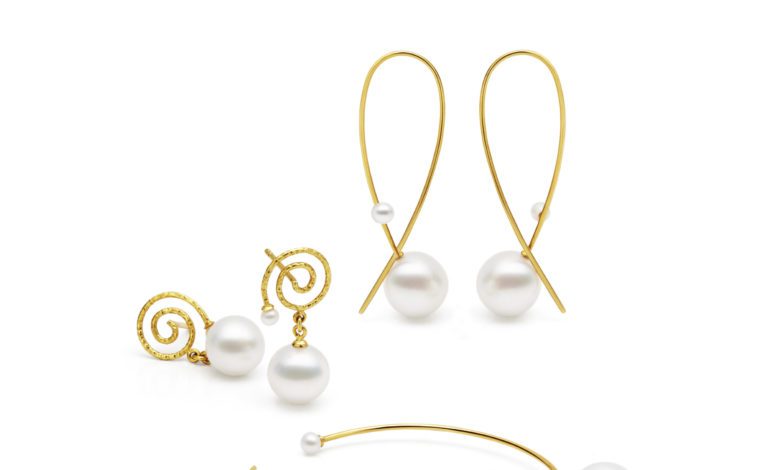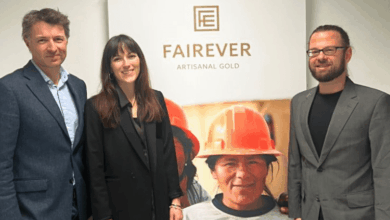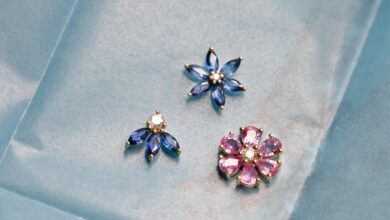Why are South Sea Pearls special?
Louise Tippey explains how it can take up to four years to produce one pearl, two years to raise the baby oyster and two years for the pearl to grow. But they are well worth the wait.

Register to get 1 free article
Reveal the article below by registering for our email newsletter.
Want unlimited access? View Plans
Already have an account? Sign in
You wouldn’t think to look at them they had a lot in common. But there’s the undeniable beauty, their magical lustre (or soul) and then there’s the power. The power they possess to really arouse us to admire their beauty and to appreciate how they were produced.
It can take up to four years to produce one pearl, two years to raise the baby oyster and two years for the pearl to grow. But they are well worth the wait. The story of the South Sea pearl began in the late 1930s when the first ever South Sea pearl was cultured. South Sea Pearls are produced by the largest variety of pearl oyster – and the rarest – the Pinctada maxima. This species requires pristine, nutrient-rich sea water, and the pearl can range in size from 9-20mm, making them the largest of all pearl varieties.
Each oyster usually only produces a single pearl: however, some oysters can be seeded twice or three times. Quality South Sea pearls usually obtain a higher value compared to their equals thanks to their exceptional nacre thickness. On average they have a nacre depth of 2-4mm.
The South Sea pearls are the colour of their host oyster and their colour scope ranges from white, silver and cream to a rich gold. The silver lipped oyster produces white and silver coloured pearls and the golden lipped oyster produces golden pearls.
Location of the South Sea Pearl
South Sea pearl farms are mainly found in North Western Australia, Indonesia and the Philippines. The pearl farms operating in waters off northern Australia are world renowned for their white South Sea pearls.
Australia
It wouldn’t do to write about South Sea pearls without mentioning the infamous Paspaley family. Founded in 1935, their roots were in natural pearling and progressed into culturing pearls in the 1950s with a Japanese family. They were devoted to develop unique techniques focusing on producing high quality pearls.
Today Paspaley are a world leader (and the largest pearling company in Australia) with their research and development of the Pinctada maxima oyster. Furthermore their commitment to sustainable aquaculture practises is formidable. As far as the global pearl production goes, those derived from the Australian South Seas account for a mere 0.05% of the pearls harvested, but upwards of 35% of the value across the world (National Geographic, April 2016). Less than 1% of pearls produced in Australia are golden pearls and these are so rare that they can command prices in the region of $75,000 (Willie Creek Pearls, Broome, Australia 2017).
The world’s biggest producers of golden pearls are from farms in the Philippines and Indonesia (Indonesia being the world’s largest producer); where warmer water temperatures seem to increase the chances of producing the rare pearl. The pearl farms are concentrated in the eastern areas of Indonesia including Bali, Lombok and Papua. Atlas Pearls, a global eco pearl farmer, have five pearl farms spread across the Indonesian archipelago and they produce some of the world’s best silver and white South Sea pearls.
The Indonesian cultured pearl industry is highly beneficial to the economic welfare of the country’s remote and often impoverished coastal communities. In the Philippines most pearl farming is located on the island of Palawan. Jewelmer has perfected the cultivation of the rich, golden South Sea pearl. Their incredible pearls are naturally golden and tantamount to decades of research and biotechnology and the ecosystem they are born into. The prices in both Indonesia and the Philippines are rising steadily as the market demand grows for a true miracle of the sea.
This Feature first appeared in the August 2017 issue of Jewellery Focus.







